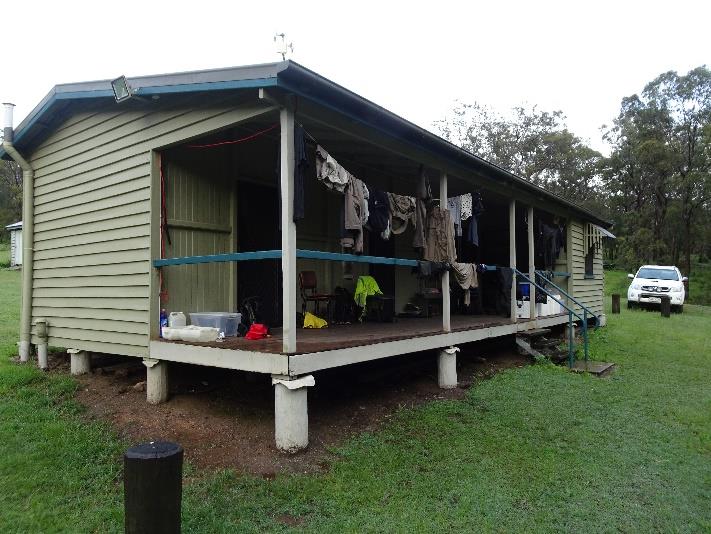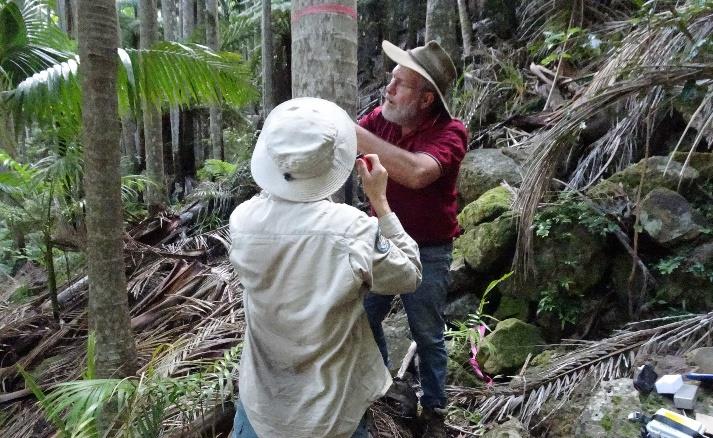IN EARLY DECEMBER 2021, QFS volunteers travelled to Kroombit Tops National Park to conduct surveys and monitoring as part of our Kroombit Threatened Frogs Project – a three-year project funded through a Community Sustainability Action Grant awarded to QFS by the Queensland State Government. In contrast with previous Kroombit Frogsearches in 2019 and 2020, conditions at Kroombit Tops were ideal for frogging, with heavy rain falling before and during surveys. As a consequence, creeks that had been dry on previous visits were running well, and dams and soaks across Kroombit Plateau were full to overflowing. Frogs were rejoicing with the rain, and the dam at Kroombit barracks (our ‘centre of operations’ during Kroombit Frogsearches) was full of calling and spawning frogs.

While warmly welcomed by the frogs, the wet weather presented some significant challenges for our team of volunteers. Leeches were out in force, with most of us sustaining one or more ‘leechings’ whilst undertaking fieldwork. Staying dry was also near impossible for the first three days of our visit, so the return of blue skies later in the week was cause for much celebration.

During our 6-day stay, QFS volunteers undertook surveys for the critically endangered Kroombit tinker frog (Taudactylus pleione) and Kroombit tree frog (Litoria kroombitensis; main photo on pg 1) at various plateau and escarpment sites across Kroombit Tops National Park. During these surveys, Kroombit tinker frogs were again recorded calling in low numbers at a handful of sites, while Kroombit tree frogs were recorded in low-to-moderate numbers at a number of stream sites on Kroombit Plateau. Encouragingly, tadpoles of the latter species (including animals nearing metamorphic climax) were seen in a number of plateau streams, indicating successful breeding earlier this season. Tusked frogs (Adelotus brevis) – another one of our target species – were also recorded at scattered localities within Kroombit National Park.

In addition to undertaking surveys, volunteers assisted with the deployment of automated acoustic recorders, which will record calling activity on a nightly basis throughout the current wet season, providing more robust data on the presence and abundance of threatened frog species at Kroombit Tops. Recordings from these devices will be downloaded and analysed following the final QFS Kroombit Frogsearch in March/April 2022.

During the December 2021 Kroombit Frogsearch, QFS volunteers were joined by staff from Currumbin Wildlife Sanctuary (CWS) involved in the captive breeding of Kroombit tinker frogs for release into the wild. Working with QFS volunteers, CWS staff busied themselves collecting silt from streams for feeding Kroombit tinker frog tadpoles being raised in captivity at CWS on the Gold Coast.
CWS staff and QFS volunteers also worked together to collect water samples and deploy ibutton temperature loggers. Collected water samples will be used for DNA testing to better understand the prevalence and potential impact of amphibian chytrid fungus at Kroombit Tops. Information from environmental DNA sampling will be used to identify sites where chytrid is scarce or absent, and therefore less likely to pose a threat to captive-bred Kroombit tinker frogs following their release into the wild. The ibutton temperature loggers were deployed in rock piles and crevices at potential release sites, and the temperature data collected will help ensure micro-climatic conditions at release sites are suitable for the Kroombit tinker frog.
Dr Ed Meyer


